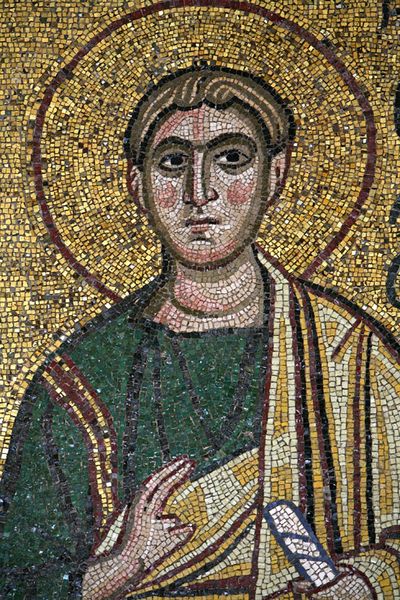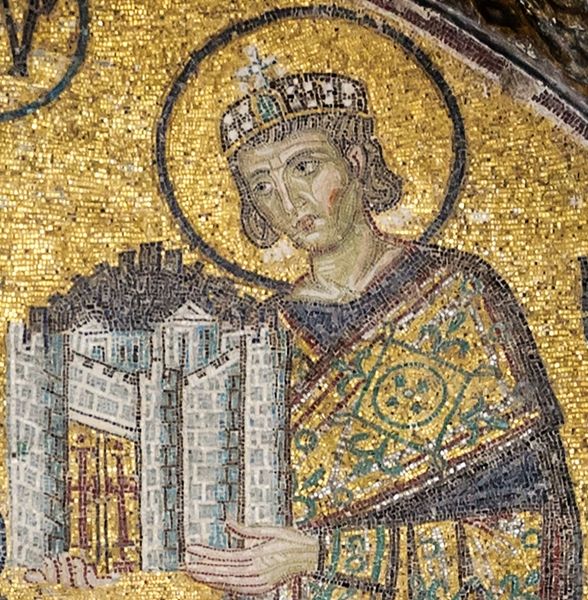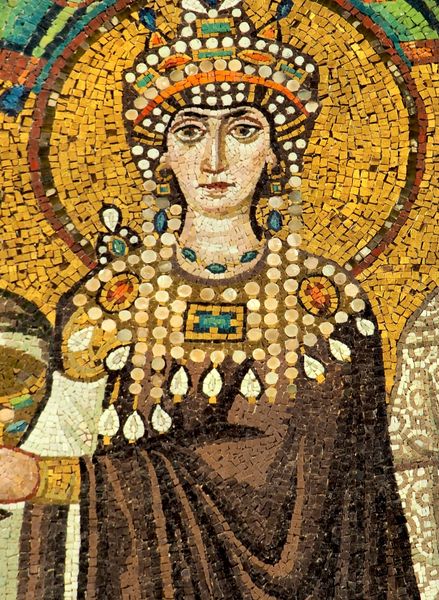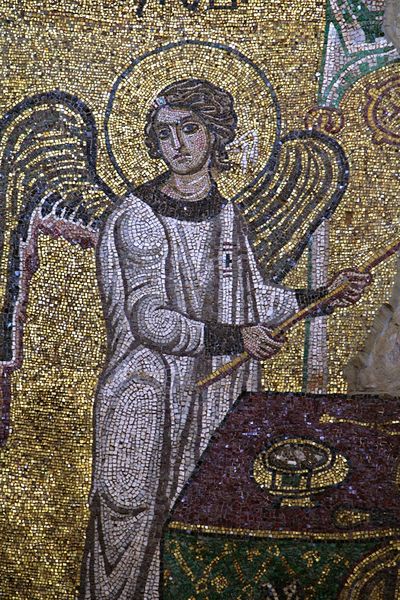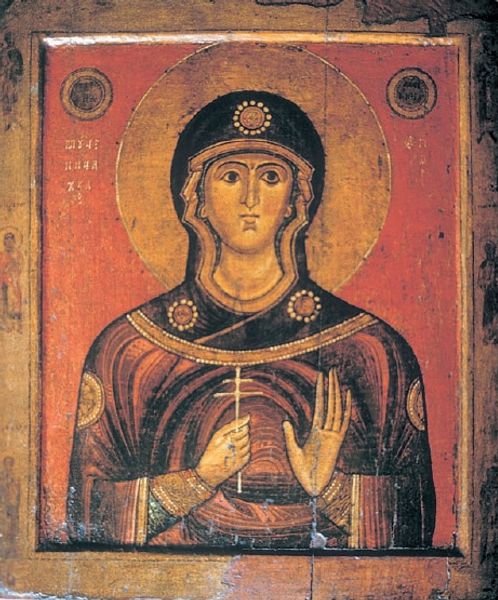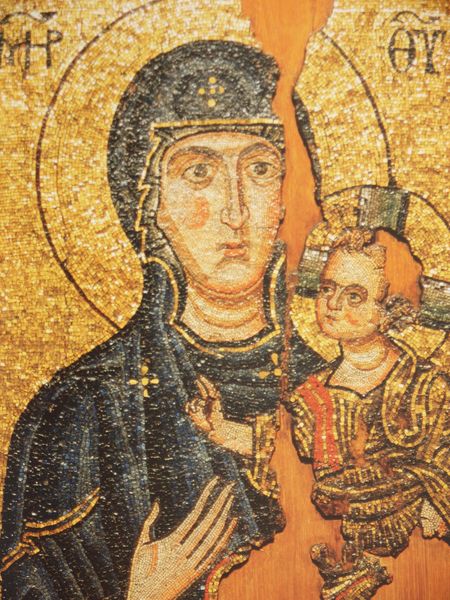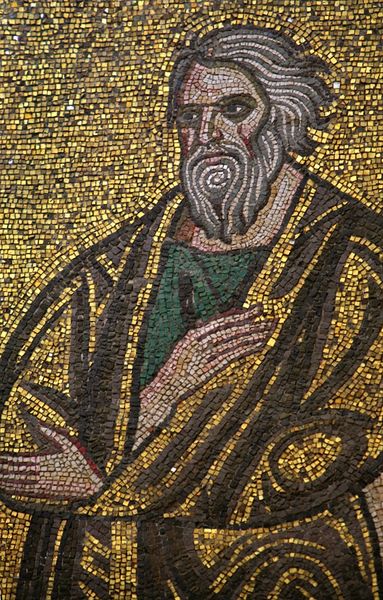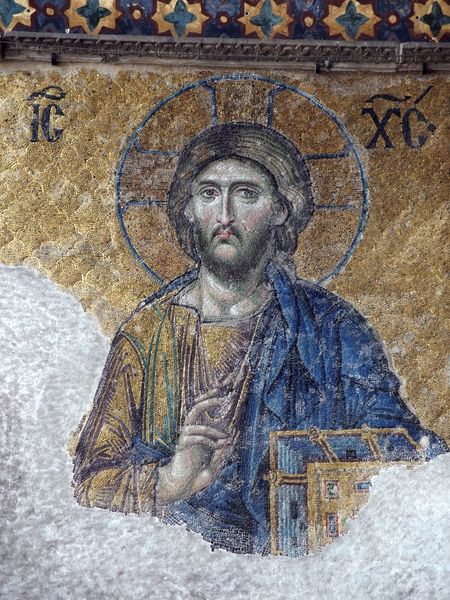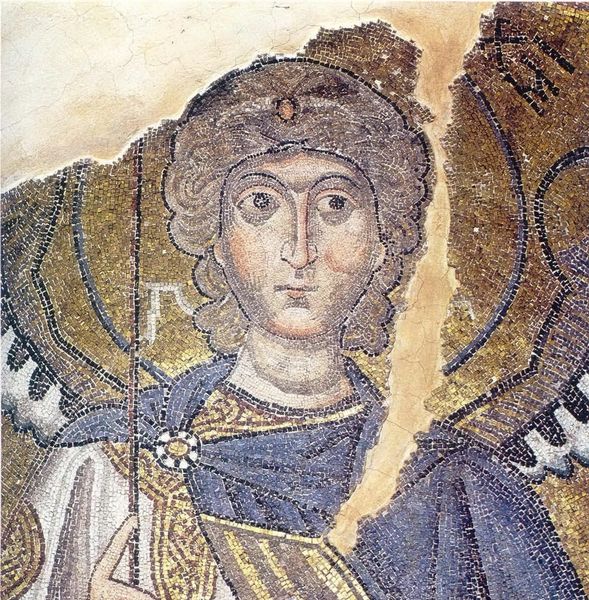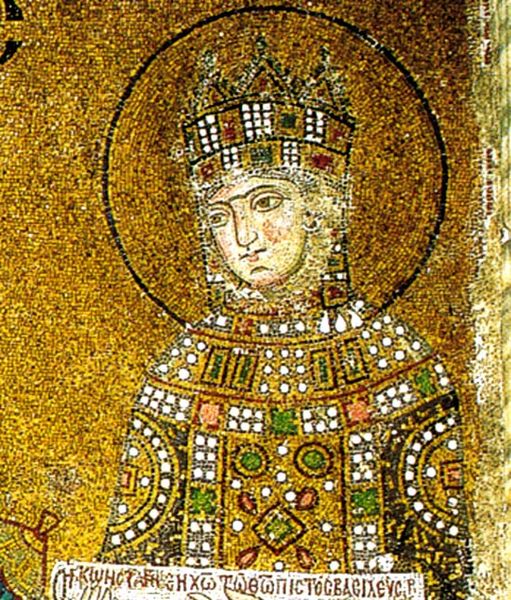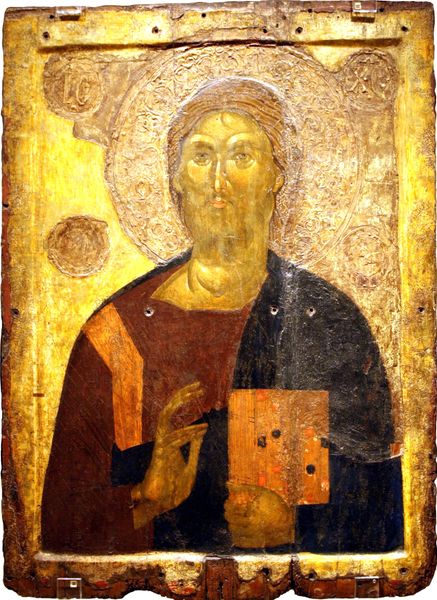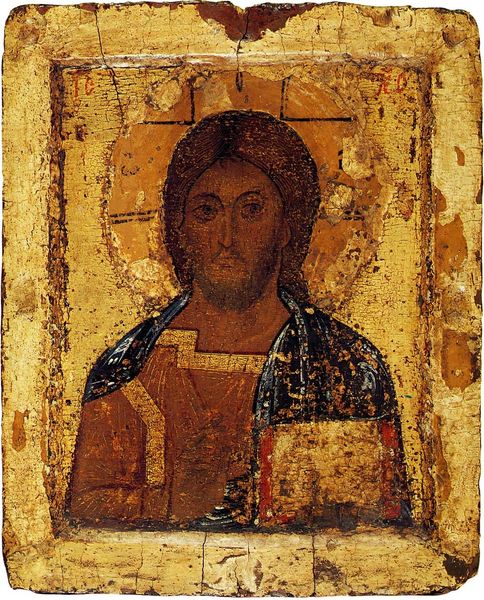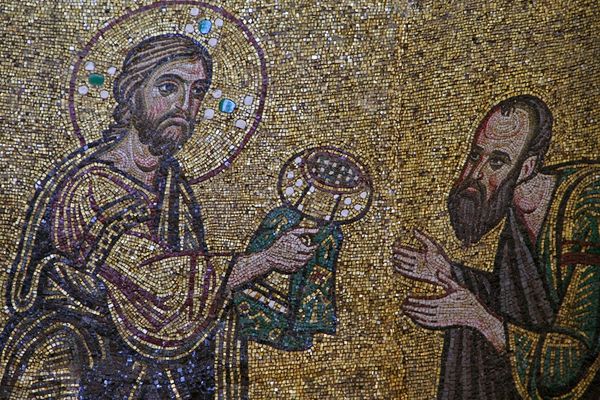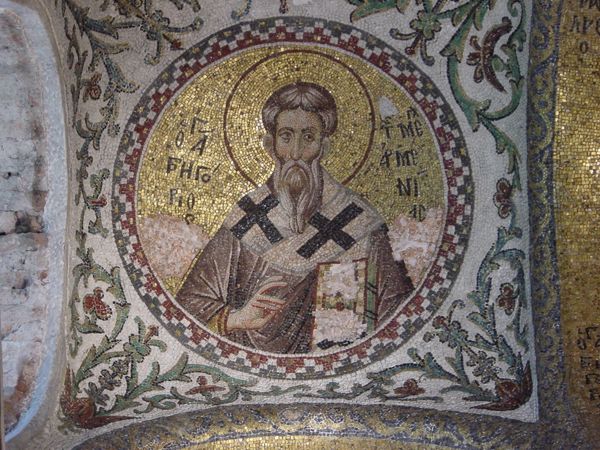
mosaic
#
portrait
#
mosaic
#
byzantine-art
#
facial portrait
#
portrait art
Copyright: Public domain
Editor: So, this is a mosaic portrait of Justinianus I from 547, found in the Basilica di San Vitale, Ravenna. What strikes me is the intense formality of it all; the rigid pose, the unwavering gaze... It feels less like a depiction of a person and more like the embodiment of an idea of power. What do you make of it? Curator: That rigidity you describe is a real draw for me, almost like looking at a coded message, or a Byzantine-era .jpeg! Think of the artist grappling with capturing not just his likeness but, as you pointed out, this abstract idea of authority, rendered in thousands of tiny, shimmering pieces. Does it make you consider what it must have been like for ordinary citizens to look up at him in the church? It is really power translated into visual form. Editor: Definitely. Knowing the mosaic is in a church amplifies that feeling. The use of gold also reinforces his elevated status... like he’s more divine than human. Curator: Gold is light and money... Divine is what divine does, right? Have you considered that maybe the formality stems from wanting to look his very best for divine approval? I bet if we were to have tea he'd crack a smile. What kind of guy do you think Justinianus really was? A ruthless pragmatist? A deeply spiritual leader? Maybe just a fella stuck in a very shiny, very public role? Editor: Probably all of those, at least a little bit. Thinking about it, maybe the rigidity isn't just about power, but about the weight of responsibility, too. It has been interesting trying to understand the context. Curator: Absolutely! And isn’t that the beauty of art, even these ancient mosaics? They're not just pretty pictures but keys that unlock hidden doors in our understanding of the past and the present.
Comments
No comments
Be the first to comment and join the conversation on the ultimate creative platform.
